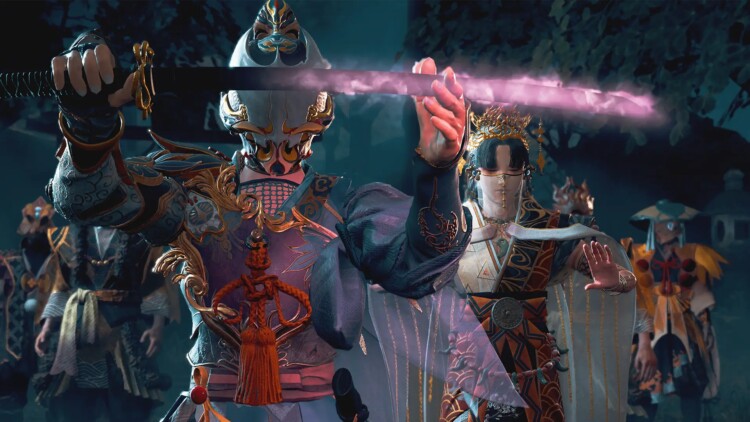Back in the day, large publishers released their fair share of both high budget AAA titles as well as the occasional smaller, experimental treats. Because these days the latter has mostly been relegated to indie devs, it’s always nice to see when companies like Capcom put something like Kunitsu-Gami: Path of the Goddess out there.
While this game is clearly no indie title, it’s immediately obvious that Kunitsu-Gami: Path of the Goddess is not meant to be a heavy hitter IP for the publisher like Resident Evil, Monster Hunter or Devil May Cry. Compared to these, “polish”, or “attention to detail” if you prefer, is a limited resource that is not applied evenly throughout the game. And I’m trying to be very careful with the use of those phrases, because in my time reviewing the game, I’ve not experienced a single bug or crash, or even frame drops for that matter.
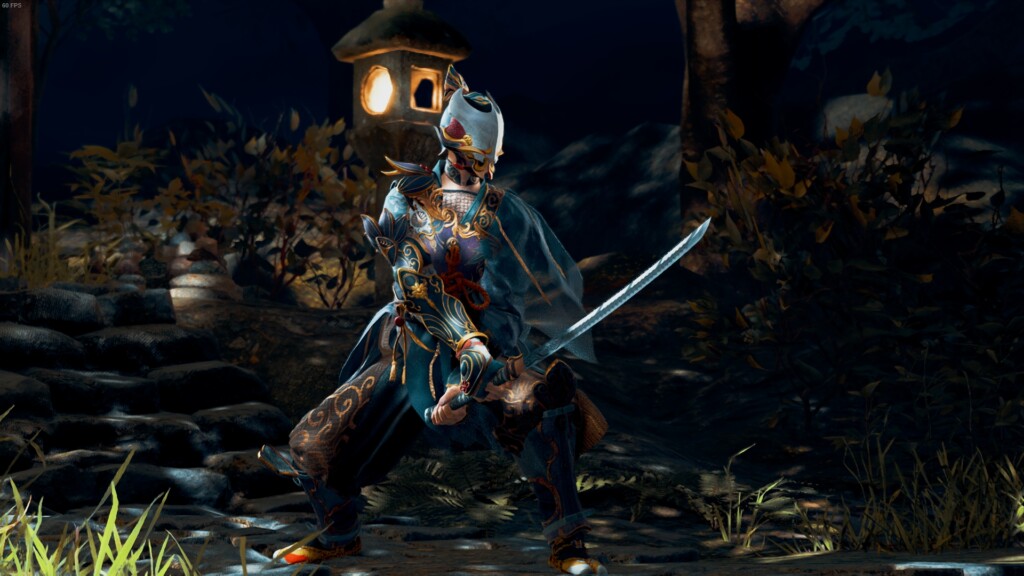
Instead, what I mean when I say is that these elements are found more in some parts of Kunitsu-Gami: Path of the Goddess and less in others. This includes, for example, things like character animation fluidity being great in combat, while canned animations seeing a lot more use outside of it. And since gameplay is always the most important aspect of any game, Capcom goes all out in just about every element in this regard, including enemy design and variety.
Made By Its Art Direction
Holding it all together is the overall art direction. And it is that art direction that makes Kunitsu-Gami: Path of the Goddess one of the best new IPs that Capcom has released since Okami, the ill-fated but critically acclaimed masterpiece from the late Clover Studio. And that game was released in an unfinished state, if the people responsible for it are to be believed, but that’s a story for another time.
While one can argue that a historical Japanese setting has been done to death, not as many have ventured to the spiritual side of things within the culture. With Okami, we saw a remix of various folklore, with the Sun Goddess taking centre stage, tastefully blended into an experience that is unique to this very day. With Kunitsu-Gami: Path of the Goddess, the scope is a little broader, with the theme this time around centred around Kagura, a Shinto ceremonial dance. Directly translating to Gods’ Entertainment, it’s more often than not associated with purification rituals, with taiko drums being the main instrument that controls the tempo of the combat music.
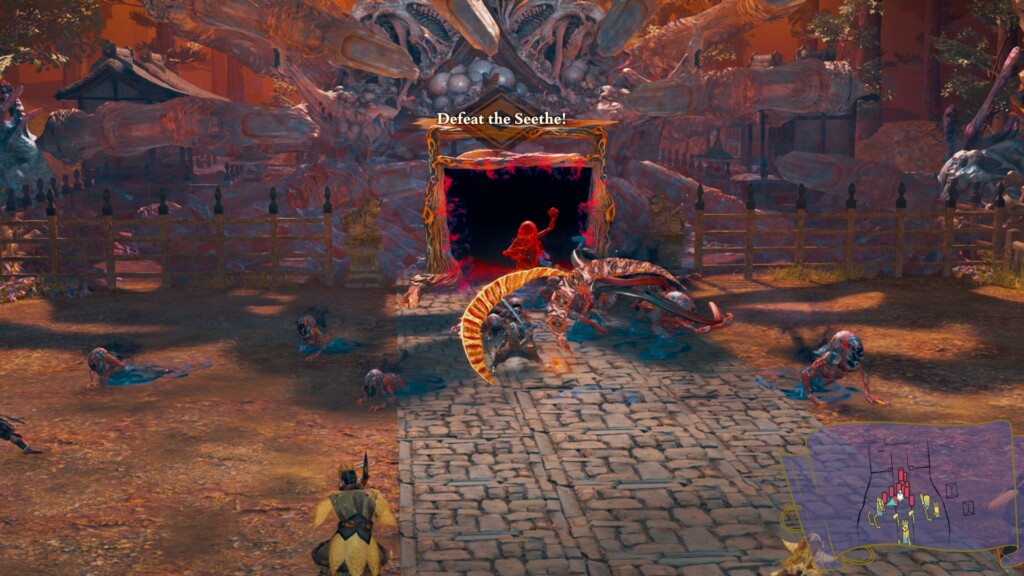
Fittingly, enemies look like various types of evil spirits that would believably be derived from Japanese folklore, referred to as the Seethe. Gameplay sees the player character Soh, seemingly a benevolent spirit of some kind, protecting what Capcom describes in the official Kunitsu-Gami: Path of the Goddess website as “The Maiden Yoshiro”. The garb this person wears signifies perhaps something more than just your average shrine maiden but the specifics, for better or worse, end up not being particularly important to the game.
Throughout Kunitsu-Gami: Path of the Goddess, the pair venture from one location on Mt. Kafuku to another, cleansing the land along the way. While Yoshiro does the actual purifying – complete with the Kagura dance and all, it’s up to players as Soh to do just about everything else. This includes not only guiding the Maiden to the source of the corruption in each area – a defiled Torii gate – but also rescue corrupted villagers and purge minor defilements along the way.
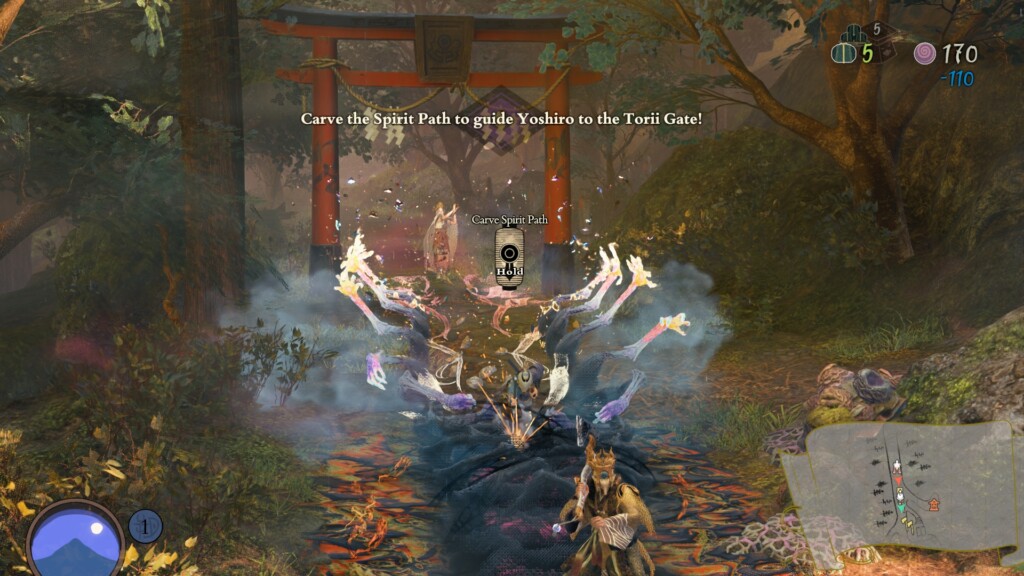
Most of this is done during the day, but when night falls, the Seethe pour out from the defiled Torii gates. During this time, Soh must not only assign roles for rescued villagers but also position them based on their roles to better protect Yoshiro, who is immobile during this phase. This process repeats in an accelerated day and night cycle, so planning gets more and more important as the levels become more intricate. And when the Maiden finally reaches the defiled gates, everyone – including Soh and the rescued villagers – participate in the Kagura dance to purge the defilement, and cleanse the area of corruption for good.
Blending And Balancing Action With Strategy
Because of the nature of Kunitsu-Gami: Path of the Goddess, you can play the early games as an action title, completely ignoring the villagers and the tower defense aspect of the game. During this time, you can see that Soh’s attacks look more like dance moves than conventional strikes. You have your light and heavy attacks that can be woven into each other like combos from the Dynasty Warriors series, with the moves themselves looking very reminiscent of the PS2 game Genji from back in 2005.
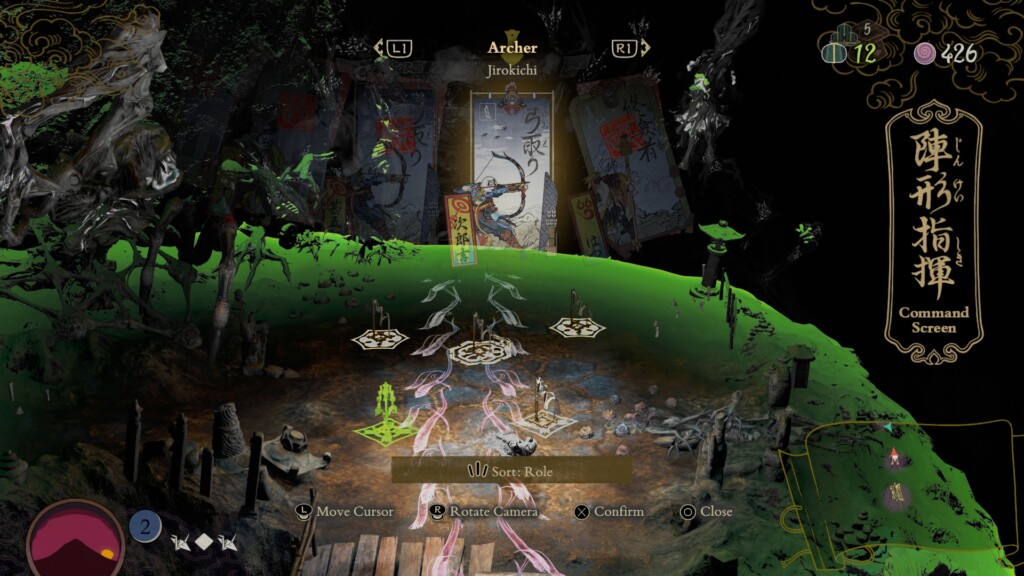
Naturally, as the game progresses, you’ll have to learn to rely on the villagers for defence, with the increasing variety and sheer numbers of the Seethe that appear. Virtually every level in Kunitsu-Gami: Path of the Goddess introduces at least one new enemy type, while new classes for villagers are introduced more sparingly. Each class is then upgraded using currency that is earned from completing levels, including bonus objectives, as well as a base upgrading subsegment for every location.
On one hand, one can take this part of the game as a sort of breather from the action. But on the other, it’s not exactly an optional aspect, as Kunitsu-Gami: Path of the Goddess has locked a fair amount of the aforementioned currency behind this part of the game. Upgrades here are done like the farm in Monster Hunter, where time progresses in a per mission basis. For what it’s worth, this currency can be refunded after use with no penalty, so if you find your current skill point distribution to be ineffective, you can freely respec them and experiment.
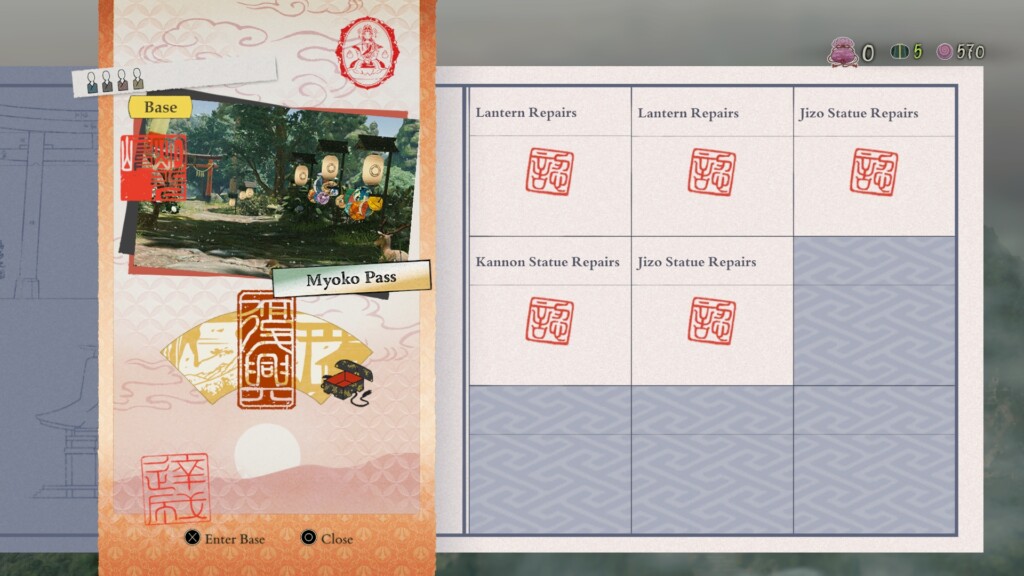
Before I talk about the music of Kunitsu-Gami: Path of the Goddess though, I’ll mention the free Okami DLC that Capcom gave to every player, granted to celebrate milestones related to the demo before the game’s release. This allows you to not only change the game’s music, but also the look of Yoshiro and Soh to characters from the 2006 masterpiece.
Calling Back To A Time Beyond Reach
So, the music of Kunitsu-Gami: Path of the Goddess. In keeping with the Kagura theme, the music in the game is pretty traditional. It’s nothing fancy, but as mentioned, the drums are the omnipresent instrument, with the tempo ups and downs indicating shifting levels of dread and urgency in combat, including when miniboss-class special enemies appear. It’s actually pretty impressive the way such minor changes can completely shift the feel of battle.
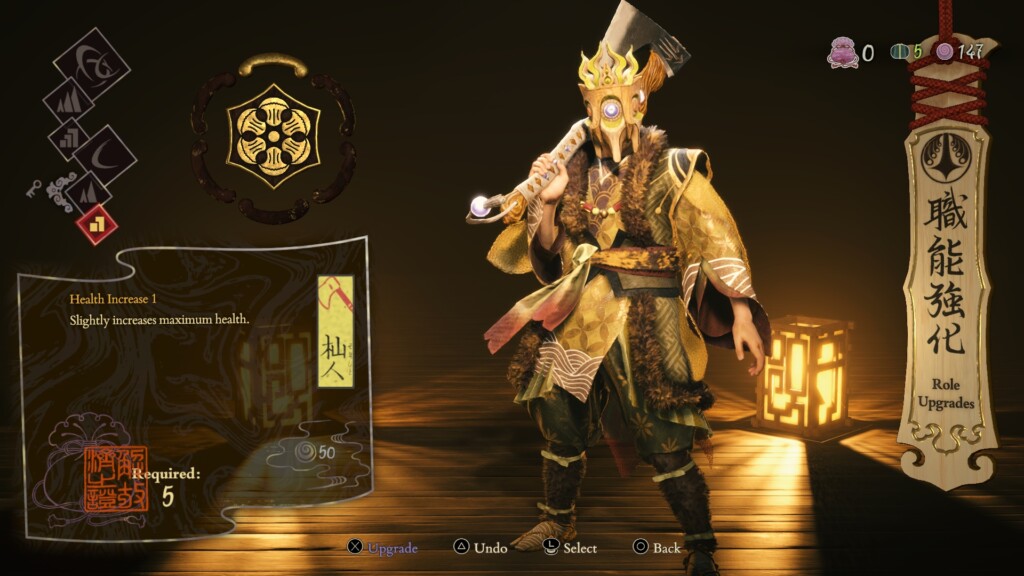
In contrast, the calm and otherwise uneventful base theme is mainly piano instead. There are a couple of variations of this, but you’re unlikely to notice the difference unless you listen to them back to back. The subtlety fits the calm mood of this half of the game, for better or worse.
It’s all very tastefully composed, and matches the overall tone of Kunitsu-Gami: Path of the Goddess perfectly. But even with the different drum tempo and the small variations of the piano, it’s all pretty flat otherwise. Think traditional Japanese instruments like the shamisen and koto, playing equally traditional pieces that, with a mindset not trained in that specific type of music, is not so easy to jive with.
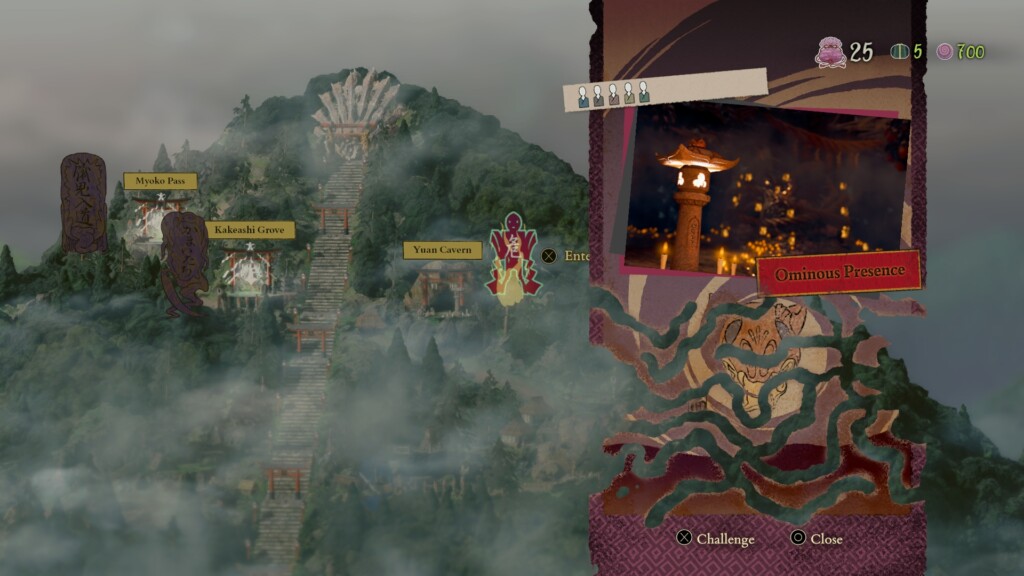
But with the Okami DLC, you have the option of replacing some BGM tracks with rearranged versions of pieces from the PS2 classic. Those who remember those tracks from back then – or frequently revisit the OST like I do – will notice that this DLC uses a slightly different arrangement.
These arrangements still match the overall Kagura theme of Kunitsu-Gami: Path of the Goddess. But because it is of a more modern pop music composition – with higher highs in both notes and tempo – it’s a lot more straightforward to emotionally relate to. Miniboss monsters don’t get their theme replaced, and so the shift in tone amplifies the urgency of the situation. With that in mind, I highly recommend switching between the two sets frequently for the best experience.
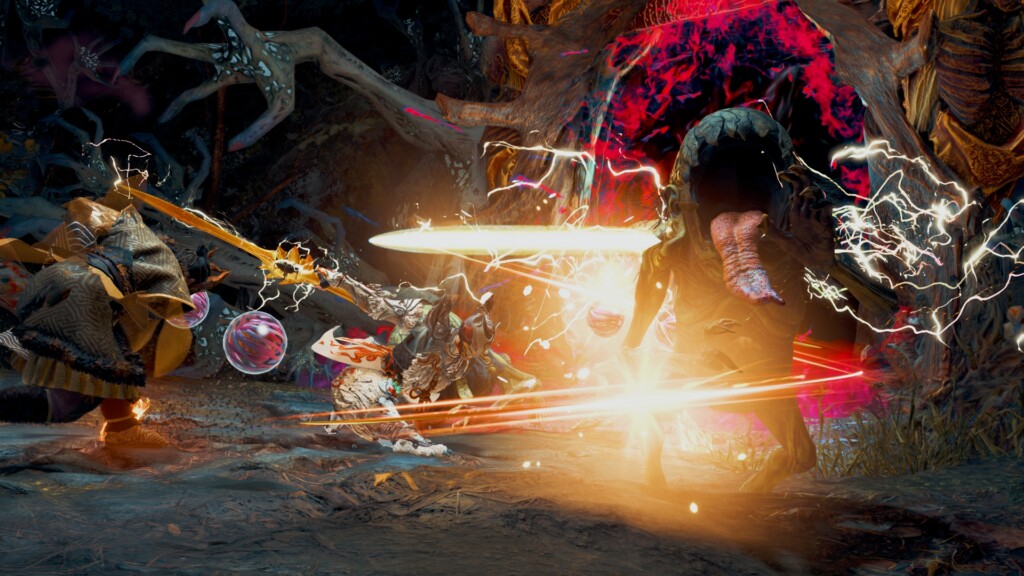
Finally, we get to replayability. I was a little concerned a game as good as Kunitsu-Gami: Path of the Goddess would be a one and done deal, but the good news is that it’s not. Even during your first playthrough you can expect to replay missions at least once more for the bonus objectives.
By the end of the story, you’ll still have plenty of unlockables left to find, locked behind the New Game Plus mode and its own set of bonus objectives. With some of these being completely opposed to each other, this means at least two additional rounds of replays for the applicable levels. And since it took me about 30 hours for the first playthrough, no doubt trying to 100% the game will take me just under another 30.
Conclusion
Kunitsu-Gami: Path of the Goddess is the reassurance that despite the closure of Clover Studio and the departure of the key people behind it, Capcom still has what it takes to create great experimental one-offs. Sure, it borrows a lot from Japanese folklore, and by extension the art direction of the best game the old studio has ever made. But with the gameplay so completely different, it would be unfair to compare the two in that specific aspect. Not that it needed to be that way, as this game stands on its own two feet just fine, and then some.
As someone who dislikes tower defence games, I really enjoyed Kunitsu-Gami: Path of the Goddess. Soh, as the playable character, still has a lot of urgency in defending Yoshiro. And while the villages are where the tower defence parallels are drawn, they are not strictly planted into the ground and immobile after the fact. You also don’t use resources dropped from defeated enemies to further specialise them – upgrades are class-wide and done outside of combat – so that’s a lot of headache out of the equation.
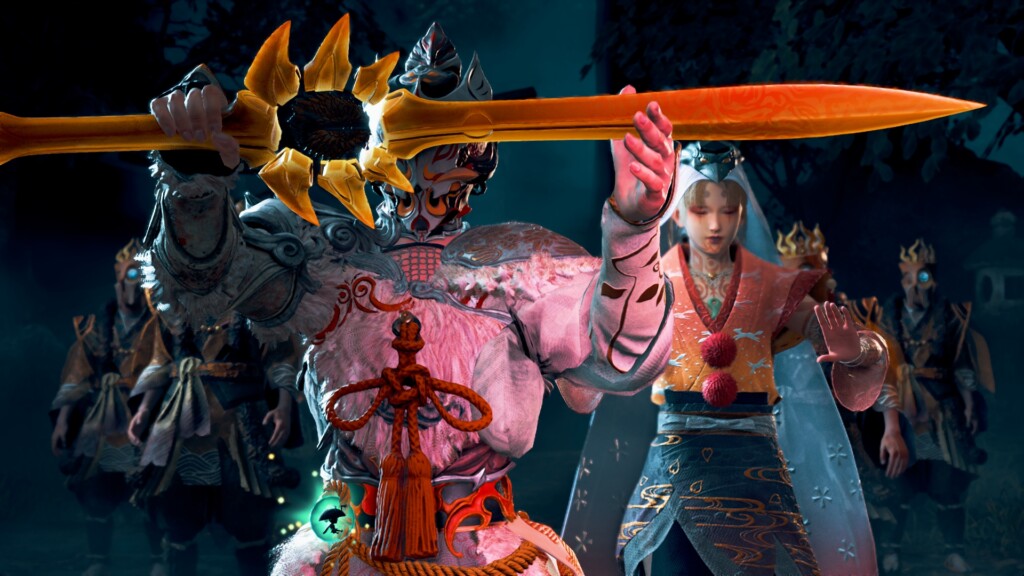
In terms of value, Kunitsu-Gami: Path of the Goddess costs RM189 on Steam, which is the platform I reviewed the game on, and RM192.56 on PlayStation. It’s slightly over the US$40 price point at the time of writing, but it offers a lot more than its US price point would indicate. And at least for now, there’s no egregious additional monetisation beyond the purchase price. If it weren’t for our currency exchange rate, I would strongly recommend not waiting for a sale to try this game.

